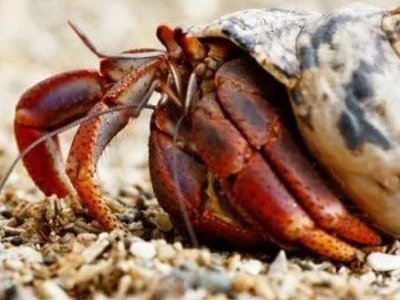
Hermit crabs are fascinating, low-maintenance pets — but don’t let their size fool you. To thrive in captivity, they need more than just a shell and a tank. A proper hermit crab habitat setup mimics their natural environment, promotes healthy behavior, and ensures they live a long, happy life.
Whether you’re a first-time crab owner or upgrading your setup, this guide will walk you through everything you need to create a healthy home for your hermit crab.
The Right Enclosure
Your hermit crab’s habitat begins with a suitable tank. Contrary to popular belief, those small plastic containers sold in pet stores are not adequate for long-term housing.
-
Tank size: Start with at least a 10-gallon glass aquarium for 1–2 crabs. For larger groups, go with 20 gallons or more.
-
Lid: Use a secure lid to maintain humidity and prevent escape.
-
Material: Glass is ideal because it helps retain heat and moisture.
Heat and Humidity
Hermit crabs are tropical creatures, so maintaining proper temperature and humidity is crucial.
-
Temperature: Keep the tank between 75°F–85°F. Use an under-tank heater or low-wattage heat lamp.
-
Humidity: Maintain 70%–80% humidity. Mist the tank daily and monitor levels with a hygrometer.
-
Avoid drafts: Place the tank in a warm, stable location, away from vents or direct sunlight.
Water and Food Dishes
Your hermit crab needs access to both fresh and saltwater daily.
-
Dishes: Use shallow bowls that your crab can easily climb into.
-
Dechlorinate: Always treat tap water to remove chlorine and heavy metals.
-
Saltwater: Use marine salt (not table salt) to create a saltwater pool, essential for molting and overall health.
Cleaning and Maintenance
-
Spot clean daily: Remove food, waste, and shed exoskeletons.
-
Deep clean monthly: Replace substrate if soiled, wipe down the tank with vinegar and hot water (avoid chemicals).
-
Monitor for mites or mold, and isolate new crabs before introducing them to your colony.
Final Thoughts
A proper hermit crab habitat setup is key to ensuring your pet stays active, healthy, and stress-free. With the right tank, substrate, heat, and enrichment, your hermit crab can live for over a decade in captivity. Creating a safe, stimulating environment is one of the best ways to enjoy the unique personalities of these amazing creatures.
Learn More
For in-depth care guides and supplies, visit trusted sources like Hermit Crab Association or speak with exotic pet veterinarians in your area.
